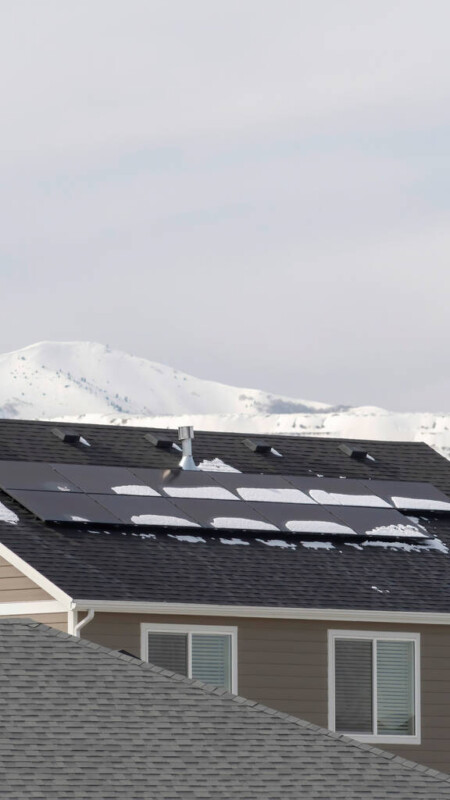You can fund your home solar installation through federal and state tax credits, utility rebates, specialized solar loans, or home equity loans to reduce upfront costs. Consider solar leases, Power Purchase Agreements, or energy-efficient mortgages if you want minimal initial investment. Community solar projects, crowdfunding, green energy platforms, and peer-to-peer lending offer groundbreaking alternatives. By mixing traditional and creative funding sources, you’ll enhance savings while supporting renewable energy goals—discover how each option may fit your home’s needs below.
Key Takeaways
- Claim federal and state tax credits to offset a significant portion of your solar installation costs.
- Apply for utility company rebates and incentives to reduce your upfront investment.
- Use solar loans or specialized financing programs to spread payments over time while maintaining system ownership.
- Consider cash payments for immediate ownership or lease and Power Purchase Agreements (PPAs) for lower upfront costs.
- Explore alternative funding methods such as crowdfunding, peer-to-peer lending, and green energy investment platforms.
Federal Tax Credits for Solar Installations
If you’re considering installing solar panels, understanding federal tax credits can greatly enhance your project’s financial outlook.
To optimize your benefit, focus on tax credit eligibility and installation requirements. The federal solar tax credit allows you to claim 30% of your system’s total installation costs on your federal tax return, as long as your installation occurs between 2022 and 2032.
Claim 30% of your solar installation costs as a federal tax credit if your system is installed between 2022 and 2032.
You must install the system at a primary or secondary residence and either purchase it outright or finance it with a loan. Only professionally installed systems qualify.
Keep thorough records of costs and invoices, as you’ll need them for Form 5695. Significantly, you must have sufficient taxable income to take full advantage of the credit.
This solution reduces your tax bill and supports renewable energy adoption.
State and Local Incentives
While federal tax credits play a significant role in reducing your solar installation costs, state and local incentives can further lower your financial burden and improve project feasibility.
In New York, for example, state incentives like the Solar Tax Credit let you claim 25% of your system costs (up to $5,000) as a state income tax credit. The NY-Sun Initiative—funded by the System Benefits Charge—offers supplementary incentives based on your region, whether you’re in the Con Edison, PSEG Long Island, or Upstate areas.
Local incentives may include property tax exemptions, municipal rebates, and building permit fee waivers, all of which can reduce your upfront and ongoing costs.
Always consult a tax professional to understand eligibility, taxability, and how these incentives interact with federal benefits.
Utility Company Rebates
Although federal and state incentives can greatly reduce the cost of going solar, utility company rebates offer another powerful way to lower your upfront investment. To benefit, you’ll need to review your utility’s rebate eligibility criteria, which often include system size and location requirements. The application process usually involves submitting documentation through your utility’s website and may require pre-approval. Be aware that rebate amounts vary, often based on performance or system capacity. Some utilities also offer tiered or special rebates for low-income households. Carefully track deadlines, as rebates can expire or change. The table below highlights key rebate features:
| Feature | Details |
|---|---|
| Eligibility | Depends on system type, size, and service area |
| Application Process | Online forms, installation proof, pre-approval |
| Rebate Amounts | Flat, tiered, or performance-based incentives |
Solar Loans and Financing Programs
Several flexible financing options make solar installation accessible without requiring the full upfront cost.
Solar loans allow you to own your solar panels with manageable monthly payments, letting you claim tax incentives and potentially increase your property value. You’ll find different solar loan types: secured or unsecured, FHA Title I, short-term balloon loans, or temporary 0% bridge loans. Each has unique terms—secured loans require collateral, while unsecured loans don’t, but often have higher interest rates.
Major banks, credit unions, and specialized lenders, including solar installers, offer tailored plans. Financing advantages include reduced upfront costs, fixed payments, and eligibility for federal and state incentives.
However, consider credit requirements, repayment terms, and penalties for missed payments to guarantee you pick the loan best suited to your financial situation.
Home Equity Loan Options
Beyond traditional solar loans, tapping into your home’s equity can open up supplementary funding options for solar installations.
Home equity pros include access to lower interest rates and potentially higher loan amounts, making this route attractive for large or complex projects. Fixed-rate home equity loans offer predictable payments, while HELOCs provide flexible borrowing for phased installations. Both may grant you tax deductions on interest paid, further improving cost efficiency.
However, home equity cons should be weighed carefully. Borrowing against your home increases risk—defaulting could lead to foreclosure. HELOCs’ variable rates can create unpredictable expenses, and drawn-out repayment increases total interest paid.
You’ll also face a formal application process and must plan repayments diligently to avoid financial pitfalls.
Cash Payments for Immediate Ownership
When you pay cash for a solar installation, you take immediate ownership of the system and eliminate ongoing loan or lease payments from the start. This approach streamlines cash flow management, since you won’t have monthly obligations, and allows you to enhance long term savings by avoiding interest charges and rising electricity rates.
The upfront investment, usually $20,000 to $30,000, is substantial and requires careful budgeting, but you’ll gain full access to federal, state, and local incentives, including the 30% Investment Tax Credit.
Immediate ownership can increase your home’s value and simplify eventual resale, as buyers often prefer properties with owned solar assets.
Consider the opportunity cost, as the funds could be used elsewhere, but the enduring reduction in energy costs often outweighs this.
Solar Leases and Power Purchase Agreements
Although purchasing a solar system outright isn’t feasible for every homeowner, solar leases and power purchase agreements (PPAs) offer accessible ways to benefit from solar energy without a significant upfront investment.
With a solar lease, you’ll enjoy lease benefits like fixed monthly payments, providing predictable expenses, and freedom from maintenance concerns since the provider handles repairs. At the end of the typically 10-to-25-year contract, you can choose to purchase, extend, or remove the system.
In contrast, PPA advantages include payments based on your actual energy consumption, aligning savings with your usage patterns. PPAs also cover installation and maintenance, but payment rates may increase over time due to escalation clauses.
Both options provide low-cost entry, but differ in payment structure and long-term savings predictability.
Energy Efficient Mortgage Programs
Several Energy Efficient Mortgage (EEM) programs can help you finance solar panel installations by rolling upgrade costs into your home mortgage. These programs, offered by FHA, Fannie Mae, VA, and USDA, let you bundle energy upgrades like solar into your loan, maximizing mortgage benefits and reducing upfront costs. You’ll need to qualify for the base mortgage and complete a home energy assessment to confirm the cost-effectiveness of your solar investment.
| Program Type | Key Benefit | Unique Requirement |
|---|---|---|
| FHA EEM | Lower upfront costs | FHA eligibility |
| HomeStyle Energy | Flexible financing | Energy report |
| VA EEM | Veteran-specific benefits | Military service |
| USDA Loans | Rural focus | Rural property qualification |
| State/Local | Incentives or rebates | Varies by location |
These programs can reduce monthly utility costs and increase your property’s value.
Community Solar Participation
If your property isn’t ideal for rooftop panels or you prefer a flexible approach, community solar participation offers a practical path to clean energy. You can join a local solar project without upfront costs and start receiving credits on your utility bill, immediately lowering your expenses.
Community solar benefits include cost-effective access for homeowners, renters, and businesses—regardless of roof suitability—while promoting energy independence and grid resilience. Many programs prioritize equitable access, with set-asides for low-income participants, ensuring solar savings and environmental justice reach more households.
Participation can even follow you within the same utility area, adding flexibility. Joining a community solar project also supports local jobs and economic development, making it a thorough solution for affordable, clean, and accessible energy.
Alternative and Innovative Funding Methods
While traditional loans and cash purchases remain common, a growing range of alternative and creative funding methods can make solar installation more accessible and affordable. Crowdfunding options let you harness support from a broad network, distributing financial responsibility among numerous contributors. Peer to peer lending connects you directly with private lenders, often securing more flexible terms than conventional banks. These approaches can bypass strict credit requirements, appealing if you’re seeking groundbreaking financial solutions. Some platforms even specialize in green energy, attracting investors motivated by sustainability. However, you should consider potential variability in interest rates and the need for strong digital outreach. Analyze and compare your options using the table below:
| Funding Method | Key Considerations |
|---|---|
| Crowdfunding | Community support, digital reach |
| Peer to Peer Lending | Flexible terms, variable rates |
| Green Energy Platforms | Sustainability-focused investors |
| Community Financing | Local engagement, shared benefits |
| Hybrid Approaches | Combine for best outcomes |
Conclusion
When you’re ready to invest in solar, you’ve got more options than ever before. Analyze your financial situation, then compare incentives, loans, leases, and even community solar models to find the best fit. Focus on eligibility, interest rates, and long-term savings. Don’t overlook local rebates or creative funding—these can make solar more affordable. By weighing each solution’s details, you can confidently choose the most cost-effective path to power your home sustainably.



